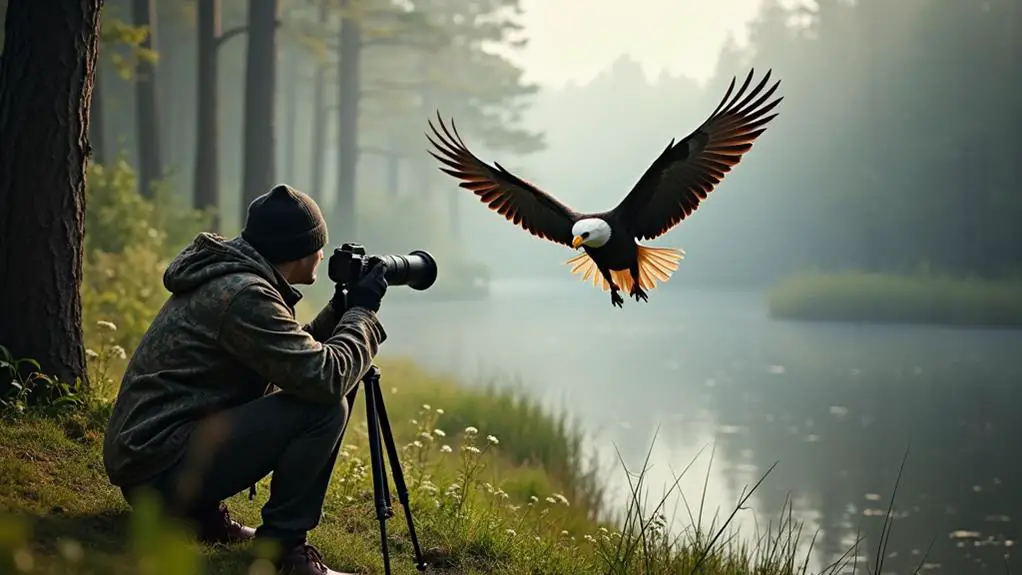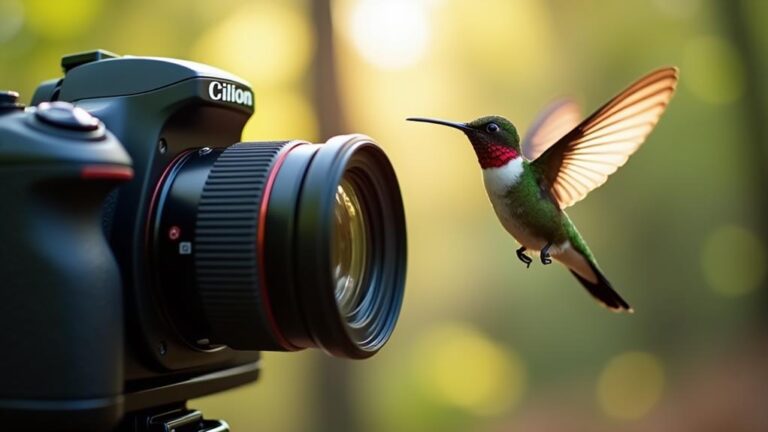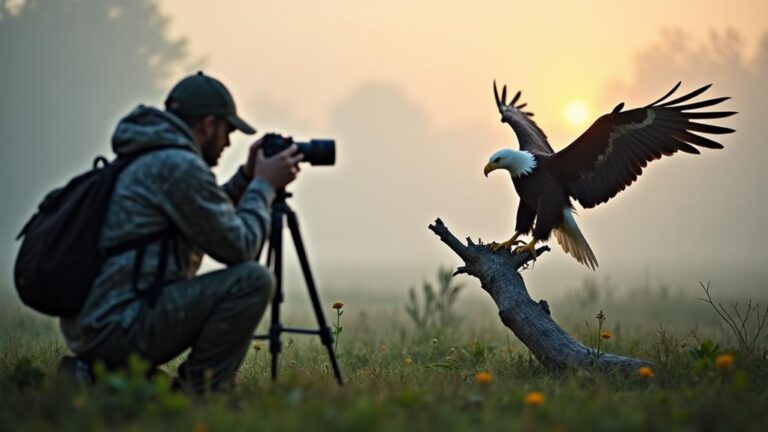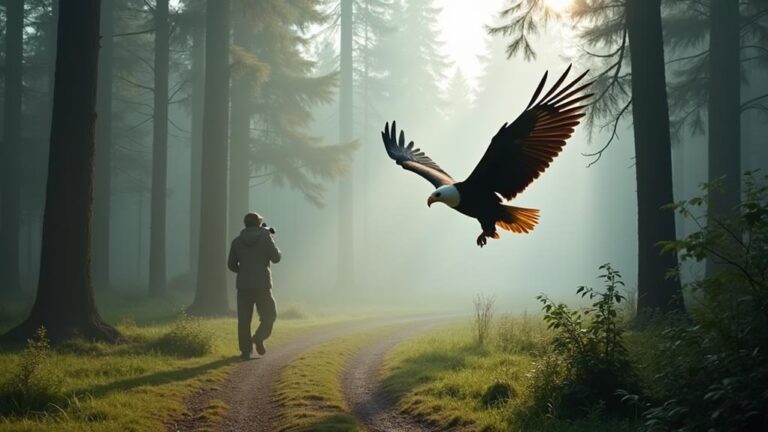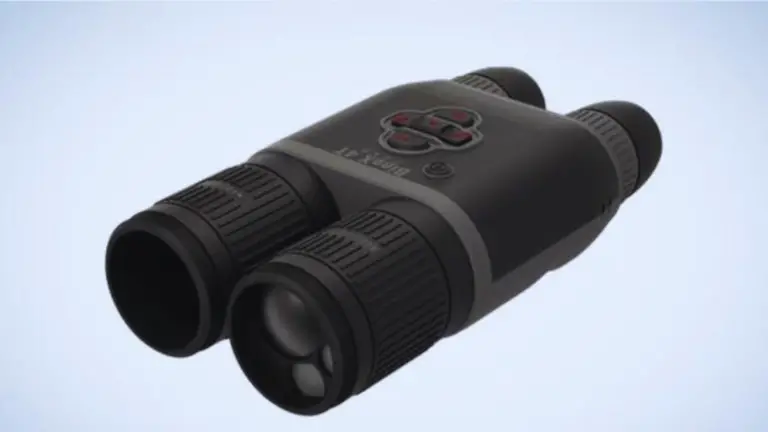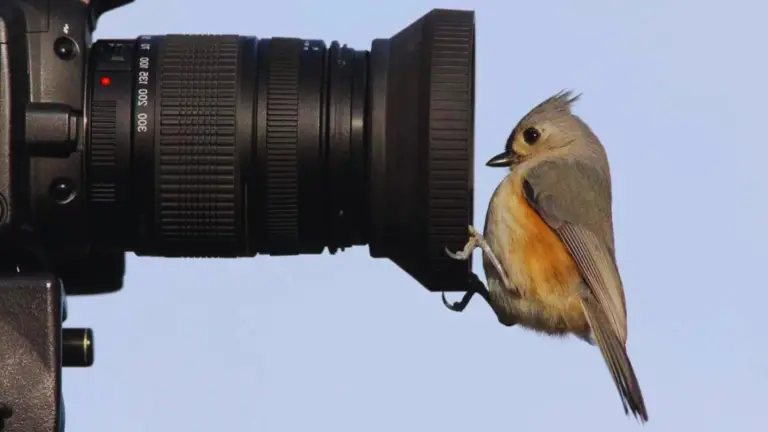As you venture into the world of birding and wildlife photography, you’re likely to realize that your camera equipment can make all the difference. You’ll want a camera that can keep up with the action, capture crisp images, and handle varying lighting conditions. But what features should you prioritize? Do you opt for the versatility of mirrorless cameras or the low-light prowess of DSLRs? Or perhaps a compact camera is the way to go for discreet, up-close shots. Whatever your preference, the right camera can elevate your photography game – and that’s just the beginning. Now, let’s dive into the 7 best cameras for birding photos.
Key Takeaways
- A full-frame or high-quality APS-C sensor camera is ideal for birding and wildlife photography, providing better low-light performance and detailed images.
- Look for cameras with advanced autofocus features, such as phase detection and continuous autofocus, for quick and accurate subject tracking.
- A camera with weather sealing, silent shutter mode, and burst mode is essential for capturing birds in their natural habitat without startling them.
- A telephoto zoom lens with a range of at least 100-400mm is necessary for keeping a safe distance while filling the frame with the subject.
- Consider mirrorless cameras, DSLRs, or compact cameras with high-quality sensors, advanced autofocus, and weather sealing for exceptional performance in capturing birding moments.
Key Features for Birding Cameras

Your camera’s sensor size plays a crucial role in capturing high-quality images of birds, especially when it comes to low-light conditions or when you’re shooting from a distance.
A full-frame sensor or a high-quality APS-C sensor will give you better low-light performance and more detailed images. Additionally, look for cameras with excellent image stabilization, which will help you capture sharp images even when you’re handholding the camera or shooting in low light.
This feature is especially important when you’re using long lenses or shooting from a distance.
Weather sealing is another essential feature for birding cameras. You never know when you’ll find yourself shooting in rainy or dusty conditions, and a weather-sealed camera will give you the confidence to keep shooting.
When you’re out in the field, the last thing you want to worry about is your camera’s durability. By choosing a camera with these key features, you’ll be well on your way to capturing stunning images of birds in their natural habitats.
Top Mirrorless Camera Options
Five top-notch mirrorless cameras stand out for their exceptional performance in capturing breathtaking birding moments.
As a bird enthusiast and photographer, you’ll appreciate the advanced features and capabilities these cameras offer.
When it comes to mirrorless cameras, you’ll want to look for features that enhance your birding experience.
Here are some key benefits to consider:
- Silent shutter mode: This feature allows you to capture images without startling your feathered friends, making it ideal for getting up close and personal.
- Weather sealing: This feature ensures your camera can withstand the elements, from misty mornings to rainy afternoons, giving you the freedom to shoot in any condition.
- Fast autofocus and burst mode: These features enable you to capture the perfect shot, even when birds are in flight or making quick movements.
With these features, you’ll be well on your way to capturing stunning birding moments that will leave you and others in awe.
Best DSLR Cameras for Wildlife

Moving beyond the realm of mirrorless cameras, you’ll find that DSLR cameras offer a unique set of advantages that make them well-suited for capturing wildlife moments.
One of the most significant benefits is their exceptional battery life, allowing you to spend more time in the field without worrying about running out of power. Additionally, DSLRs often boast superior camera ergonomics, making them more comfortable to hold and maneuver during extended shooting sessions.
When it comes to wildlife settings, DSLRs excel in low-light conditions, thanks to their ability to utilize faster shutter speeds and wider apertures.
This enables you to capture crisp, high-quality images even in the early morning or late evening hours when wildlife is most active. Furthermore, DSLRs tend to offer more advanced autofocus systems, which are essential for tracking fast-moving subjects like birds in flight.
With the right DSLR camera, you’ll be able to freeze the action and capture stunning wildlife moments with ease.
Camera Lenses for Birding Success
You’ll quickly realize that lens focal length matters when capturing birds, as a longer focal length allows you to keep a safe distance while still filling the frame with your subject.
When choosing a telephoto zoom lens, you’ll want to consider options that offer a range of at least 100-400mm to ensure flexibility in the field.
With the right lens, you’ll be able to freeze the action and capture stunning portraits of your feathered friends.
Lens Focal Length Matters
When birding enthusiasts pair their camera bodies with the right lens focal length, they unlock the secret to capturing stunning, frame-filling images of their feathered friends.
The focal length of your lens determines the angle of view, and finding the sweet spot is crucial for getting up close and personal with your subjects.
A longer focal length compresses the scene, making objects appear closer together, which is ideal for capturing birds in their natural habitat.
- Focal length and subject distance: A 300mm lens, for example, will give you a more intimate shot of a bird at 10 feet than a 100mm lens at the same distance.
- Lens compression: A longer focal length will compress the scene, making the bird’s surroundings appear closer than they actually are.
- Focal sweet spot: Finding the ideal focal length for your camera and subject will result in a more natural, undistorted image with a pleasing bokeh.
Telephoto Zoom Range Options
As you venture into the world of birding photography, you’ll quickly realize that a telephoto zoom lens is an indispensable tool in your camera bag.
This type of lens provides the telephoto reach you need to capture stunning images of birds in their natural habitats. When choosing a telephoto zoom lens, consider one that offers a range of at least 100-400mm, with some lenses stretching up to 150-600mm or more.
This range allows you to adapt to various shooting situations, from capturing birds in flight to snapping portraits of perched birds.
Image stabilization is another crucial feature to look for in a telephoto zoom lens. This technology helps compensate for camera shake and blur caused by hand movement or low light conditions, ensuring sharper images even at slower shutter speeds.
Some lenses also offer advanced stabilization modes, such as panning or tripod modes, to further optimize image quality. By pairing a telephoto zoom lens with a camera body that supports image stabilization, you’ll be well-equipped to tackle the demands of birding photography and produce outstanding results.
Compact Cameras for Stealthy Shots
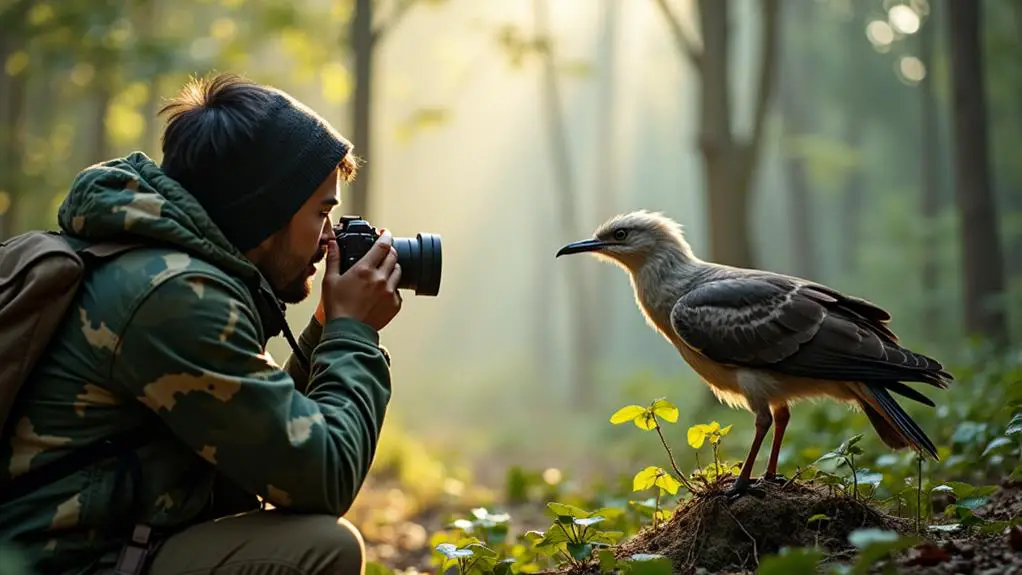
Compact Cameras for Stealthy Shots
Frequently, birders find themselves in situations where a bulky camera setup can spook their feathered friends, making compact cameras an attractive alternative for capturing those elusive, up-close shots.
You need a camera that can slip into your pocket or bag, allowing you to move quietly and unobtrusively through the environment.
This is where compact cameras shine, offering pocket power and discreet designs that let you get up close and personal with your subjects.
Some key features to look for in a compact camera for birding include:
- A high-quality sensor with excellent low-light performance, allowing you to capture clear images even in challenging conditions
- A versatile lens with a decent zoom range, giving you the flexibility to frame your shots without disturbing your subjects
- Advanced autofocus and tracking capabilities, helping you lock onto your target and follow it as it moves
Budget-Friendly Camera Choices
Three budget-friendly camera options stand out for birders who want high-quality results without breaking the bank.
If budget constraints are holding you back from capturing stunning birding shots, fear not! You can still get impressive results without emptying your wallet.
The Canon EOS Rebel T7i is an excellent entry-point for birders.
With its 24.2-megapixel sensor and 45-point autofocus system, you’ll be able to capture crisp images of your feathered friends. Plus, its vari-angle touchscreen LCD makes it easy to shoot from unusual angles.
The Nikon D5600 is another great option, boasting a 24.2-megapixel sensor and 39-point autofocus system.
It’s also Wi-Fi enabled, making it easy to transfer your shots to your smartphone for instant sharing.
Lastly, the Sony Alpha a6400 is a compact powerhouse that’s perfect for birding.
Its 24.2-megapixel sensor and 425-point phase-detection autofocus system ensure fast and accurate focusing.
With camera affordability no longer an issue, you can focus on what matters most – capturing the beauty of the avian world.
Advanced Features to Consider

Six key advanced features can take your birding photography to the next level.
You’re no longer a beginner, and you’re looking to upgrade your skills and equipment.
You want to capture those breathtaking moments when a bird takes flight or when a predator stalks its prey.
To do this, you need a camera that can keep up with you.
- Image stabilization: This feature is a must-have for birding photography. It helps reduce camera shake and blur, allowing you to capture sharp images even when you’re shooting handheld or in low light.
- Weather sealing: You never know when you’ll find yourself shooting in harsh weather conditions. Weather sealing ensures your camera can withstand the elements, from rain to dust to extreme temperatures.
- Fast autofocus: You can’t afford to miss the shot because your camera’s autofocus is slow. Look for a camera with advanced autofocus features, such as phase detection or continuous autofocus, to help you track your subject quickly and accurately.
FAQs: Best Cameras for Birding Photos
Can I Use a Camera for Birding and Other Types of Photography?
You can definitely use a camera for birding and other types of photography, leveraging its versatility to adapt to your birding style, and then easily switching to capture stunning portraits, landscapes, or street scenes with ease!
Do I Need a Tripod for Birding and Wildlife Photography?
As you’re snapping a rare species, your heart races – but so does your camera! Coincidentally, stability is key; you’ll soon realize a tripod’s importance, though mastering a handheld technique will also help you nail those coveted shots.
How Do I Protect My Camera From Harsh Outdoor Conditions?
When you’re shooting outdoors, you’re exposing your gear to the elements! You’ll want to prioritize weather sealing and invest in rain covers to safeguard your camera from moisture, dust, and extreme temperatures, ensuring uninterrupted capture of breathtaking moments!
Are Camera Settings the Same for Morning and Evening Shoots?
As you venture out, you’ll find that morning and evening shoots require distinct settings; during the golden hour, you’ll want to capitalize on the soft light by adjusting your ISO, aperture, and shutter speed to capture the warm, ethereal ambiance.
Can I Use a Smartphone Camera for Birding and Wildlife Photography?
You can try using a smartphone camera, but you’ll hit limitations – limited zoom, poor low-light performance, and limited manual controls – that hinder capturing stunning birding and wildlife shots, making a dedicated camera a better choice for comparisons.
Conclusion:
As you venture into the world of birding and wildlife photography, remember that the right camera equipment can make all the difference. With the top-notch options outlined above, you’ll be well on your way to capturing stunning moments. Did you know that a single bird species can be worth up to $275 million in ecotourism revenue? With the right gear and skills, you can help contribute to the conservation of these incredible creatures while snapping breathtaking shots!

